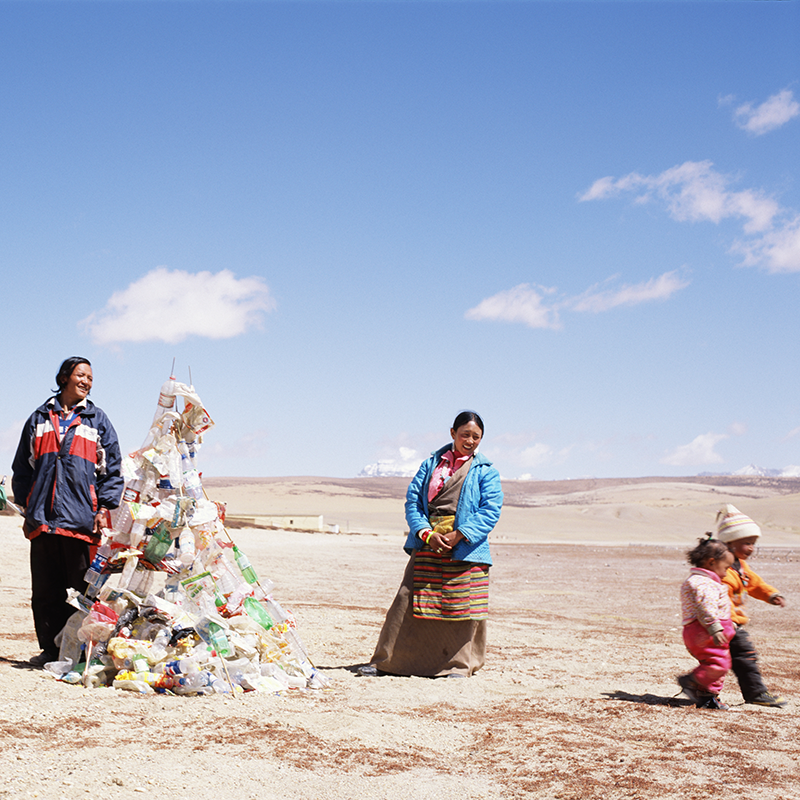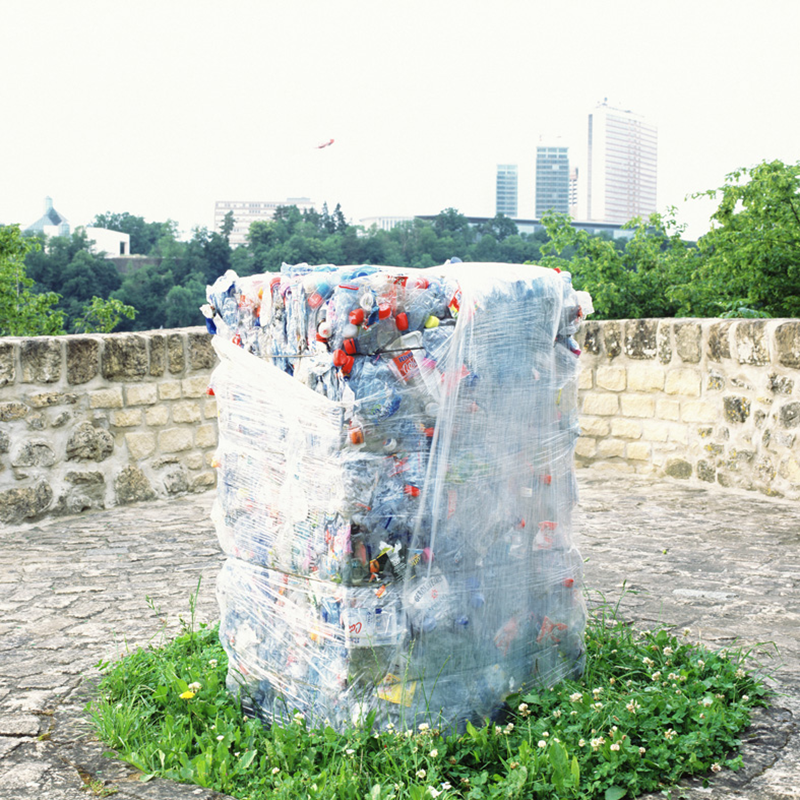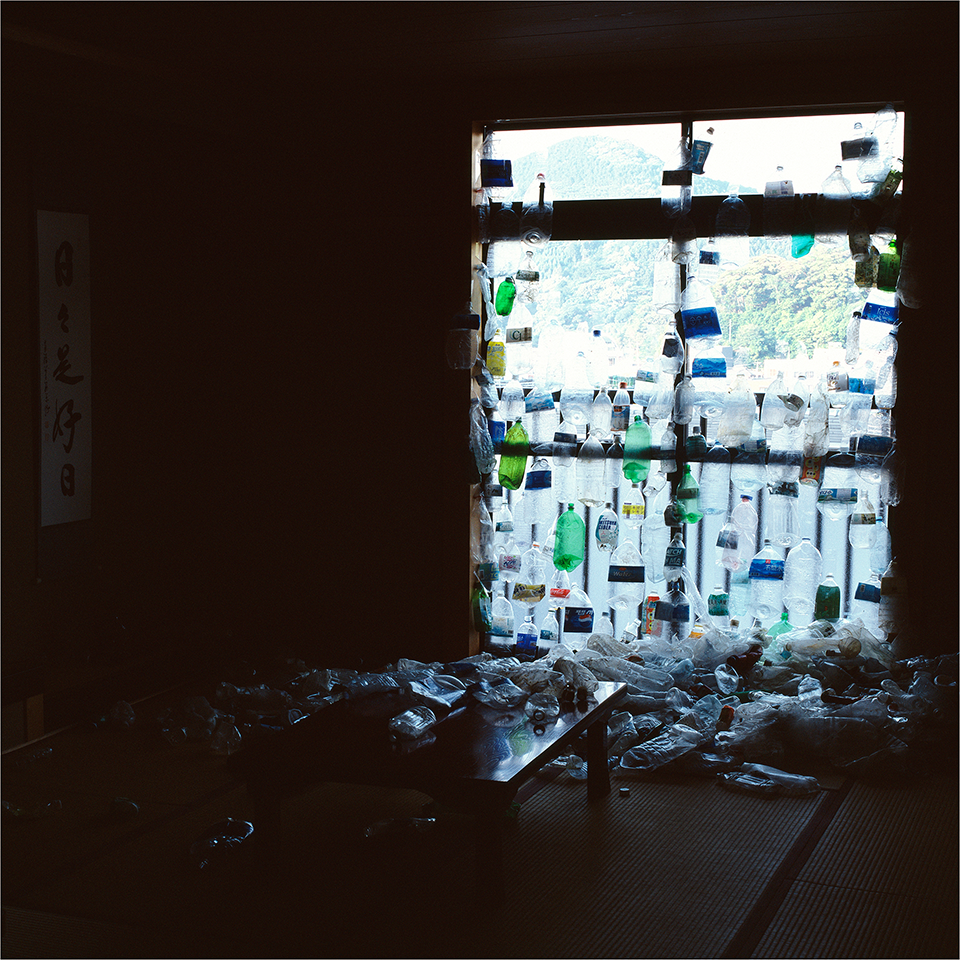チベット自治区南西部にあるカイラス山は、ヒンドゥー教徒の信仰の対象となり、チベット仏教においては世界の中心とされてきた。その美しい山は、聖なる地ゆえ登攀が禁じられ、巡礼者やバックパッカーたちは山の周囲を廻る。標高5000メートルを超えるその到達困難な地で、仰ぎ見る絶景の足下に捨てられたペットボトルを集め、作品として再生するプロジェクトを敢行した。分解されずにゴミとして残ってしまうペットボトルを大地から拾い集め、中国・天津のリサイクル工場に送り、そこで繊維へと加工し絨毯に仕上げる。
プロジェクトは続いて、青島(中国)、釜山(韓国)、対馬(日本)も三カ国、海を挟んでつながる地で行われ、海流に乗って国境を超え浜に流れ着いたペットボトルを集めた。
ルクセンブルグではゴミ収集車に同乗し、都市生活から溢れるペットボトルを回収した。経済効率を求められる社会で、環境という共有財産をどう保持するか。廃棄物を巡る旅から、地球を取り巻く問題へ思いを巡らせる。
Mount Kailash in southwest Tibet is worshipped by Hindus and regarded as the spiritual center of the world by Tibetan Buddhists. Because it is so sacred, climbing this beautiful mountain is prohibited, and so pilgrims, backpackers, and others can often be seen wandering around its periphery. Ozawa initiated a project that involved collecting PET bottles that had been discarded at the foot of Mount Kailash in this inaccessible region more than 5000 meter above sea level and recycling them as art. He gathered up the PET bottles, which because they don’t biodegrade remain as garbage, and sent them to a recycling plant in Tianjin, China, where they were processed into fiber which was then woven into carpet.
The project later shifted to the three cities of Qingdao (China), Busan (South Korea), and Tsushima (Japan) that face each other across the sea, where PET bottles that drift ashore after being carried across international borders by ocean currents were collected.
In Luxembourg, Ozawa rode along with garbage collectors and picked up just some of the hordes of empty PET bottles that litter the city. In a society that demands economic efficiency in the form of the environment? From a journey centering on waste, this project has developed into one that forces us to consider many of the problems facing the world today.




